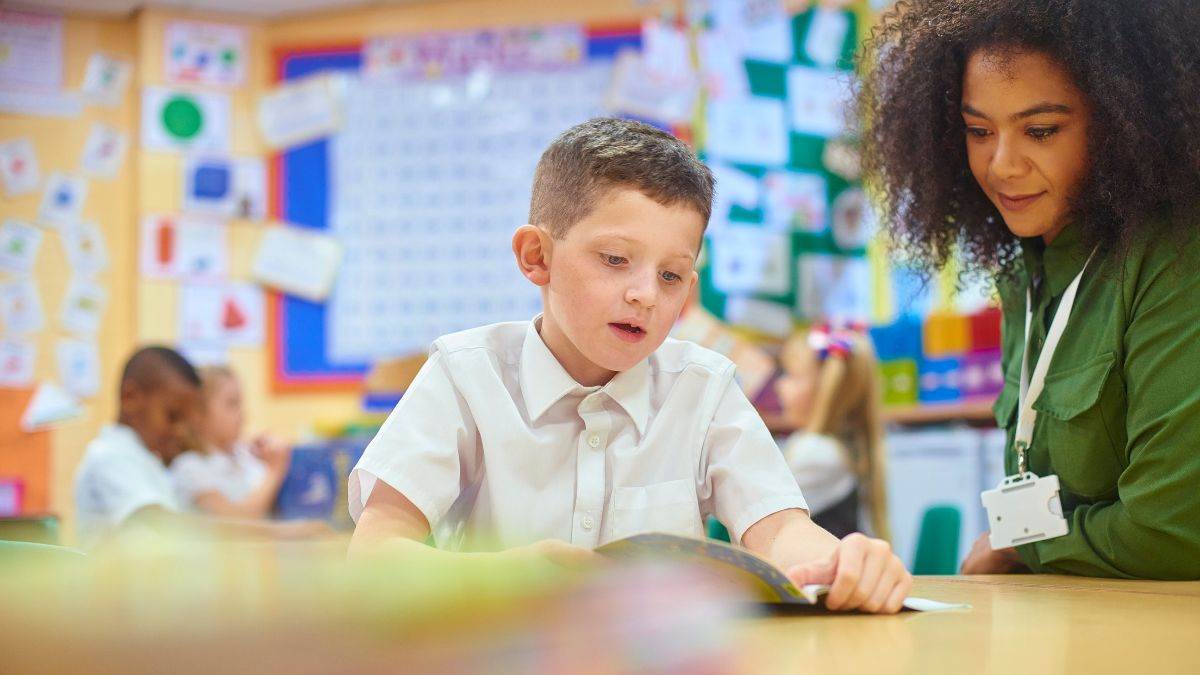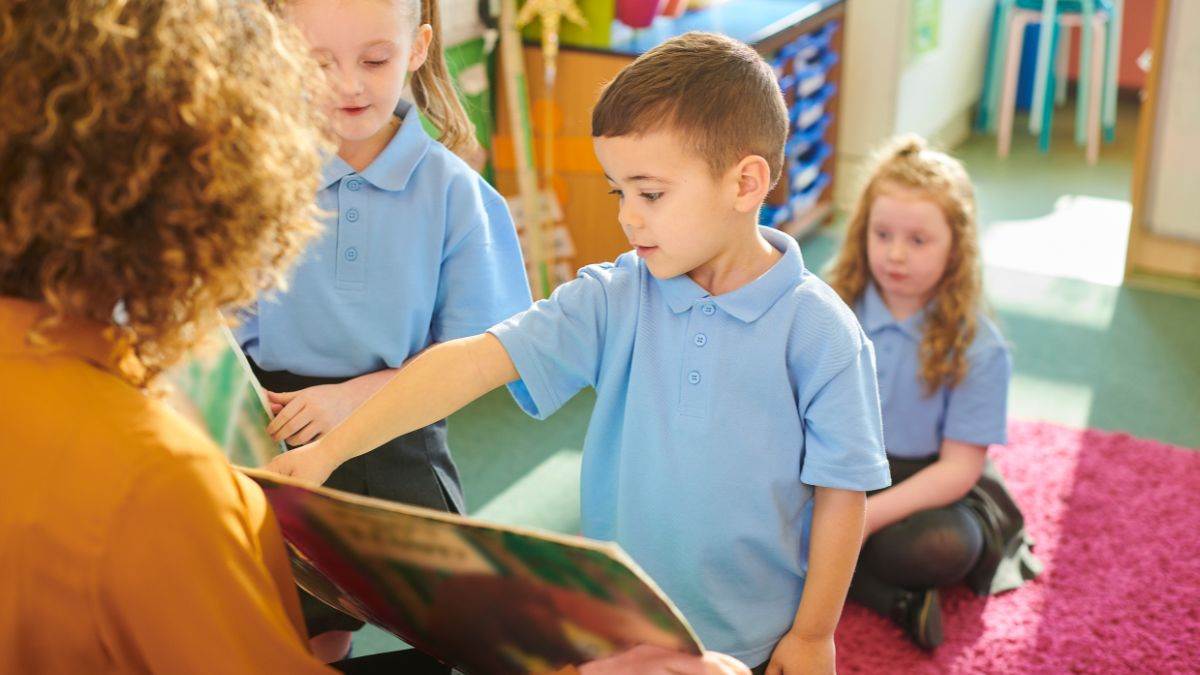Nurturing a love of reading: Guided reading's place in the Year 1 classroom
Published on: 13 December 2023
Year One teacher Peter Lambden shares his tips for creating a love of reading through guided reading in the classroom.

We at BookTrust know that if children have a choice over the books they read, they are more likely to read for pleasure. We also know from our own research that the more reading role models or 'reading influencers' they have, the better.
Our research also shows that for 57% of children in school (aged 4-7), teachers are considered key 'reading influencers', but that another 29% of children (aged 4-7) do not experience regular reading with their teachers.
We asked Peter Lambden to share his tips for modelling an enjoyment of reading in the classroom.
Guided Reading (GR) as a structure for teaching reading has fallen out of favour in recent years, with many schools now preferring a Whole-Class Reading (WCR) approach.
I would argue, though, that there is still a role for GR to play, especially in a Year 1 setting, and that role is in encouraging children's independence, agency, and love of books.
Traditional GR involves dividing the class into small groups, with each group reading and discussing a book selected to match their reading ability. However, a major criticism of this approach is that the teacher's attention is limited to a few students at a time, leaving the rest of the class without guidance.
WCR involves the entire class working through a single book chosen by the teacher, followed by activities to enhance reading skills.
While efficient and effective, this approach may overlook individual needs. Some children, especially reluctant readers, may feel uninvolved as they are simply carried along with the group. It also removes any involvement children have in directing their own learning - in other words, picking what they read.
Promoting agency

This is where GR can come into its own. In my Year 1 class, I run both WCR and GR sessions. In GR, I forget the idea of follow-up tasks and little group independent tasks - because these approaches are covered in WCR - and instead have an environment in which children are free to pursue their own book-related interests.
For this to work, it's important to achieve the quiet atmosphere necessary for focused learning since the teacher needs to work closely with the children in the small guided group. In order to do this, I relax the formal expectations of the setting for the rest of the class.
I establish this part of the day as a calm and relaxing time. Sometimes, I start with a guided meditation to set the right mood, followed by an explanation that for the next half hour, they can immerse themselves in their books. This is their time to just enjoy themselves.
During these sessions, any child who is not reading with an adult is free to go and pick a book to take away and read on their own. I purposefully encourage the children to forget about book bands and reading levels, with the only input from me being to collate and gather books in order to make sure there's always something new to find - but the child has to be the one to find it!
I see it as important to give them total freedom here. No choice is a bad choice; the idea is to follow your heart and leap into any book that takes your fancy.
Giving children the choice and agency to pick and direct their own reading cements the positive memories and experiences of reading in their minds. There's a sense of achievement and belonging in this, too. Natural trends begin to emerge, and children share what they've discovered in a book.
One thing I've always noticed in my classroom is the way that children - when faced with a vast array of books - are able to seek out and dig into one they really enjoy. A phenomenon that always runs through my classes is "trending books". One child finds a random (usually non-fiction, but not always) book on the shelf, and after a week or so, the children are clamouring to "have a go" reading it. They then discuss it, laugh about it, and naturally share thoughts.
It's subtly different to the way this is done with WRC. In WRC, the discussion is scaffolded and - dare I say it? - a little forced. GR, if adapted slightly, can allow a more organic and natural discussion around books.
To help achieve some learning and make sure there is a focus, I sometimes give those reading independently a task running alongside their reading. For example, I'll ask them to make a list of all the nouns they find in their book, or I'll ask them to make a note of a funny line that a character says or find a new setting in a book they'd love to visit. At the end of the session, I build in a little time for the class to share what they've found.
Personalised support

While the rest of the class explores and engages in books, the teacher is free to give guided, targeted support to a small group of children, which addresses their needs a bit more precisely than is possible in WCR. These smaller groups allow for small discussions about the joys of reading that may be lost for certain children in WCR, and provide teachers with the opportunity to provide immediate and targeted feedback to students.
Smaller groups also encourage active participation from children, allowing them to engage with the text in a meaningful way. Through discussions, questions, and activities with a teacher, children are actively involved in the reading process, which often sparks their curiosity and fosters a deeper understanding of the text.
Such personalised attention and guidance can also boost children's confidence and encourage them to persevere in their reading journey.
The smaller groups also help teachers to dig into why reluctant readers are so. It's easier to hone in on and pinpoint the issues this way. Reluctant readers will often find they can discuss and talk around the book when it's scaffolded and supported by a teacher rather than by their peers.
Peer-to-peer is good and is central to the success of WCR, but sometimes, especially in Year 1, the teacher needs to get in there first and take the child's hand through the process.
So, while WCR comes with many benefits, it's important to remember that this doesn't mean GR is without merit. Small tweaks to the structure of the sessions can make GR a great environment for exploring books and what it really means to be a "reader".
Peter Lambden is a Year 1 teacher.





